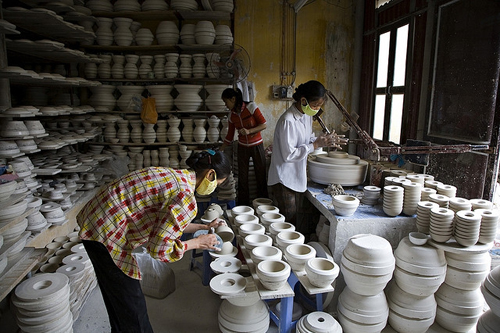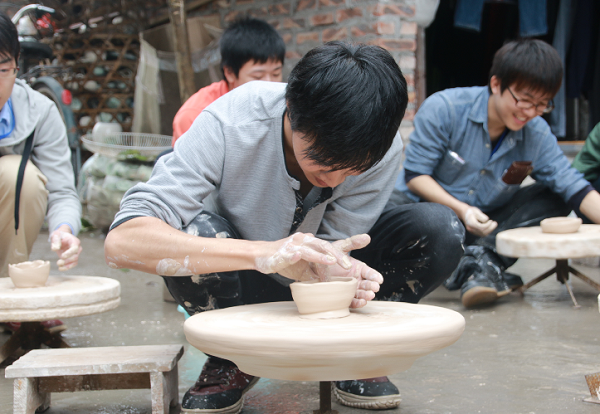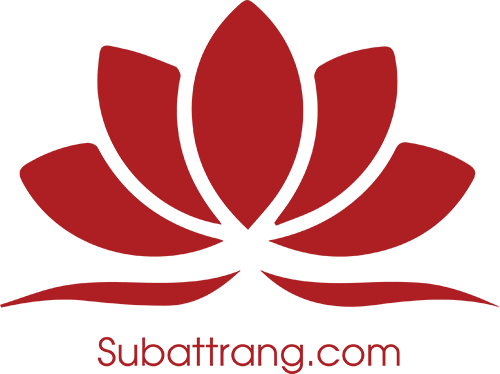News
Grow Your Knowledge on Export Markets for Bat Trang Ceramics
Bat Trang ceramics have long stood as a symbol of exquisite craftsmanship, cultural heritage, and artistic expression originating from the Bat Trang village near Hanoi, Vietnam. Renowned worldwide for their unique designs, durability, and vibrant glaze techniques, Bat Trang ceramics continue to captivate collectors, artisans, and consumers alike. For exporters and entrepreneurs seeking to explore or expand in this niche market, understanding the dynamics of global demand, export challenges, and strategic marketing is crucial. This article delves deep into the export markets for Bat Trang ceramics, offering comprehensive insights and practical knowledge to grow your expertise and business potential.
Understanding the Global Appeal of Bat Trang Ceramics

The allure of Bat Trang ceramics goes beyond their functional use; they embody centuries-old traditions and a distinct aesthetic that differentiate them in the global marketplace. Before exploring specific export strategies, it’s important to grasp why these ceramics command international interest and how that shapes export opportunities.
The Historical and Cultural Significance of Bat Trang Ceramics
Bat Trang ceramic production dates back over 700 years, making it one of the most historically rich pottery villages in Vietnam. The continuous practice of traditional techniques alongside modern innovations has preserved its authenticity, which resonates deeply in foreign markets eager for cultural and artisanal products.
The narrative behind Bat Trang ceramics—the stories told through patterns, shapes, and glazing—adds intrinsic value. Buyers worldwide are increasingly seeking authentic, handcrafted products that carry cultural narratives, distinguishing Bat Trang ceramics from mass-produced alternatives.
This historical weight also positions Bat Trang ceramics as collectible art pieces and heritage souvenirs, opening diverse market segments ranging from home decor enthusiasts to museum curators and cultural institutions.
Unique Craftsmanship and Design Features
Bat Trang ceramics exhibit a distinctive blend of traditional motifs such as dragons, lotuses, and bamboo intertwined with contemporary adaptations. The use of high-quality clay sourced locally, combined with sophisticated firing techniques, ensures durability and an attractive finish that appeals both visually and tactilely.
Exporters must emphasize these qualities in product positioning and marketing messages. Highlighting craftsmanship and origin helps build consumer trust and justifies premium pricing in developed markets where appreciation for handmade goods is strong.
The versatility of Bat Trang ceramics—from everyday tableware to decorative vases and tea sets—increases their appeal across various consumer preferences and price points, a critical advantage in export diversification.
Economic Impact and Role in Local Communities
Bat Trang ceramics not only represent cultural wealth but also significant economic potential for the local community. Many families depend on pottery-making for their livelihoods, and increasing export revenues can enhance living standards and foster sustainable development.
Understanding the socio-economic backdrop helps exporters engage more ethically and sustainably. Partnering with cooperatives and fair trade organizations ensures that export growth benefits local artisans and communities directly, enhancing brand reputation internationally.
Promoting this social responsibility aspect adds appeal to conscious consumers in Western markets who prioritize ethical sourcing and production practices.
Identifying Key Export Markets for Bat Trang Ceramics

Export success depends heavily on targeting the right markets where demand aligns with product offerings. This section explores prominent regions driving the global consumption of Bat Trang ceramics and analyzes their market characteristics.
North America: A Market for Artistic and Cultural Goods
The United States and Canada represent significant opportunities due to their large consumer bases interested in art, collectibles, and ethnic home decor. Increased multiculturalism and lifestyle trends favoring handcrafted items boost demand for Bat Trang ceramics.
Consumers here often seek unique gifts, kitchenware, and decorative products imbued with cultural significance. Additionally, specialty retailers, galleries, and exhibitions provide vital distribution channels for Bat Trang exporters.
However, navigating strict import regulations, quality certifications, and competition from other Asian ceramics requires strategic planning and local partnerships. Understanding consumer preferences and seasonal buying patterns enhances market penetration.
Europe: A Hub for Heritage and Luxury Craftsmanship
European countries, particularly Germany, France, and the UK, boast sophisticated markets where appreciation for fine craftsmanship and design excellence runs high. Bat Trang ceramics fit well within luxury and artisanal product categories popular among affluent consumers and tourists.
Europe’s emphasis on sustainability and eco-friendly products dovetails with the natural materials and traditional production methods used in Bat Trang ceramics. Promoting this alignment can increase acceptance and demand.
Exporters should capitalize on participation in European trade fairs, cultural expos, and collaborations with designers to raise brand awareness. Price sensitivity varies widely, so offering both premium and accessible lines may capture broader market share.
Asia-Pacific: Growth Potential in Emerging and Established Markets
Within Asia-Pacific, markets such as Japan, South Korea, Australia, and Singapore show growing interest in Vietnamese ceramics. Japan and Korea, in particular, have longstanding appreciation for pottery arts, offering receptive audiences.
Emerging economies like Malaysia, Thailand, and the Philippines present expanding middle classes keen on home decoration and gifting. Proximity reduces shipping costs, making these markets cost-effective targets.
Retail trends such as online marketplaces and boutique stores provide new avenues for reaching customers. However, competition from local ceramics industries necessitates emphasizing the uniqueness and higher quality of Bat Trang ceramics.
Comparative Overview of Export Markets
| Region | Key Characteristics | Consumer Preferences | Challenges | Opportunities |
|---|---|---|---|---|
| North America | Large multicultural population | Artisanal, cultural, gift items | Regulatory compliance, competition | Specialty retail, exhibitions |
| Europe | Mature luxury market | Heritage, luxury, sustainability | Price sensitivity, market entry | Trade fairs, designer collaborations |
| Asia-Pacific | Mix of mature and emerging markets | Pottery appreciation, home décor | Local competition, varying tastes | Online sales, boutique retailers |
Understanding these nuances helps exporters tailor product offerings, marketing communications, and distribution models effectively.
Strategies for Successful Exporting of Bat Trang Ceramics

Having identified promising export territories, businesses must implement effective strategies encompassing product adaptation, branding, logistics, and relationship management to thrive globally.
Product Customization and Innovation
While tradition defines Bat Trang ceramics, adapting to foreign consumers’ tastes and functional requirements is necessary. This might include altering sizes, colors, or packaging to align with target demographics.
Innovation can involve developing limited edition collections inspired by global design trends, leveraging collaborations with international artists, or integrating modern technologies like digital printing while maintaining authenticity.
Balancing innovation with tradition requires deep market research and ongoing communication with artisans to preserve core identity while meeting demand shifts.
Building a Strong Brand Identity
Branding transforms Bat Trang ceramics from mere products to coveted symbols of culture and artistry. A compelling brand story highlighting heritage, craftsmanship, and community impact generates emotional connections with buyers.
Visual elements—logos, packaging, and promotional materials—should reflect premium quality and cultural aesthetics. Multilingual marketing content adapted to each market enhances accessibility.
Digital presence through dedicated websites, social media, and influencer partnerships amplifies visibility and credibility, especially among younger consumers.
Navigating Logistics and Compliance
Exporting ceramics entails handling fragile goods requiring careful packaging, reliable transportation, and insurance. Establishing partnerships with experienced logistics providers minimizes damage risks and delivery delays.
Compliance with international standards such as food safety (for tableware), customs regulations, and environmental certifications is mandatory. Keeping abreast of changing rules and investing in certification facilitates smooth customs clearance and market acceptance.
Warehousing solutions abroad can reduce shipment times and respond quickly to orders, improving customer satisfaction.
Cultivating Relationships and Distribution Channels
Building trustful relationships with overseas buyers, distributors, and agents is critical for sustained export success. Regular communication, transparent pricing, and consistent quality reinforce partnerships.
Selecting appropriate distribution channels—be it direct online sales, wholesalers, or specialty retailers—depends on market characteristics and product types. Trade shows and cultural festivals offer valuable networking platforms.
Investing in customer service, after-sales support, and feedback mechanisms fosters loyalty and repeat business.
Marketing and Promotion Techniques Specific to Bat Trang Ceramics

Marketing Bat Trang ceramics internationally demands creativity and cultural sensitivity to convey their unique value propositions effectively. This section explores targeted promotional tactics aligned with consumer behavior and digital trends.
Leveraging Storytelling and Cultural Narratives
Effective storytelling weaves the history, techniques, and artisan lives behind each piece into compelling narratives that resonate emotionally. Videos, blogs, and interactive content showcasing the artistic process enrich buyer appreciation.
Cultural storytelling differentiates Bat Trang ceramics in crowded markets, elevating perceptions from commodity to cultural treasure. Collaborating with cultural institutions and influencers enhances authenticity.
Participating in International Exhibitions and Fairs
Trade fairs dedicated to crafts, home furnishings, and Asian art serve as prime arenas for exposure to buyers and media. Participation allows hands-on demonstrations and direct networking, essential for building trust with new clients.
Careful selection of events aligned with target markets optimizes investment returns. Follow-up activities post-events sustain momentum.
Utilizing Digital Marketing and E-Commerce Platforms
With rising e-commerce adoption globally, Bat Trang ceramics vendors benefit greatly from online storefronts and social media campaigns. Platforms such as Etsy, Amazon Handmade, and region-specific marketplaces open access to broad consumer bases.
Search engine optimization, targeted ads, and collaborations with lifestyle bloggers and vloggers amplify reach. Virtual reality and augmented reality tools enable immersive product experiences online.
Implementing Sustainable and Ethical Marketing Messages
Modern consumers increasingly value sustainability and ethical production. Marketing campaigns emphasizing Bat Trang’s natural materials, eco-friendly processes, and fair artisan wages tap into this trend.
Certifications like Fair Trade and organic labeling further validate claims, attracting conscious buyers and strengthening brand integrity.
Overcoming Challenges in Exporting Bat Trang Ceramics
Like any export venture, delivering Bat Trang ceramics to the global market involves overcoming obstacles related to production capacity, quality control, market entry, and competitive pressures.
Managing Production Scalability While Maintaining Quality
As demand grows, scaling up production without compromising craftsmanship quality poses significant challenges. Mechanizing certain processes risks losing the artisanal touch that defines Bat Trang ceramics.
Solutions include training additional skilled artisans, adopting semi-automated techniques selectively, and maintaining rigorous quality assurance protocols. Balancing quantity and quality ensures long-term brand reputation.
Addressing Intellectual Property and Counterfeiting Risks
The popularity of Bat Trang ceramics attracts counterfeit products, undermining authentic makers and confusing buyers. Securing intellectual property rights, trademarks, and geographic indications helps protect the brand.
Exporters should educate buyers on authentic features and collaborate with authorities to curb illegal copies. Transparency about origin and production enhances consumer confidence.
Adapting to Changing Consumer Preferences
Global trends evolve rapidly, requiring exporters to monitor shifting tastes proactively. For example, minimalistic design trends may conflict with traditional ornate styles.
Regular market research, pilot product launches, and feedback integration allow timely adjustments, keeping products relevant and appealing in dynamic markets.
Handling Regulatory and Political Uncertainties
Trade policies, tariffs, and geopolitical tensions can disrupt export operations. Staying informed about regulatory changes and diversifying markets mitigates risks.
Engaging with trade associations and government export promotion programs offers valuable guidance and support during uncertain periods.
Conclusion
Expanding your knowledge of export markets for Bat Trang ceramics reveals a complex but rewarding landscape rich with cultural depth, diverse consumer preferences, and evolving global opportunities. By appreciating the unique heritage and craftsmanship that make Bat Trang ceramics stand out, identifying target markets carefully, and implementing thoughtful export strategies that balance tradition with innovation, exporters can successfully navigate challenges and unlock new avenues for growth. Combining robust branding, ethical sourcing, and dynamic marketing approaches with sound operational practices will secure Bat Trang ceramics a cherished place on international shelves and in consumers’ hearts worldwide.
